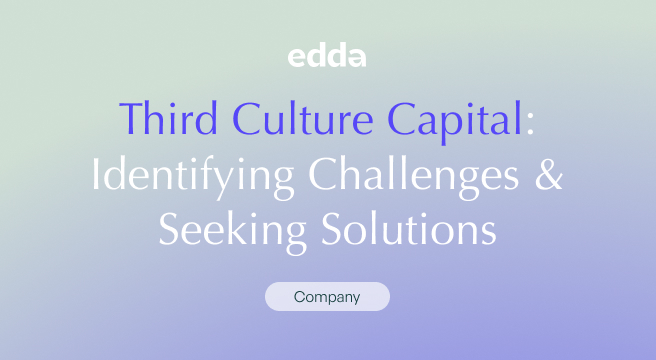Private equity (PE) and venture capital (VC) professionals are constantly seeking ways to gain a competitive edge and staying ahead of the curve has become more challenging than ever.
Enter PitchBook—a revolutionary platform that transforms the way PE and VC firms conduct investment research and analysis. With its comprehensive data coverage, advanced search capabilities, and powerful analytics tools, PitchBook empowers investors to unlock new opportunities, make informed decisions, and drive superior investment outcomes.
In this article, we will explore how PE and VC professionals can harness the power of PitchBook to navigate the intricacies of the investment landscape, identify lucrative opportunities, and achieve their investment objectives with confidence.
In addition, discover why top VC firms consider Edda’s venture capital deal flow management software a staple in their venture capital tech stack.
The Role of Data in Private Equity & Venture Capital
Data acts is a critical element of making well-informed choices. For investors, having access to precise and detailed data is vital to evaluate potential investments, reduce risks, and enhance returns. However, the private market presents distinct obstacles for investors.
In the past, the quest for dependable data within private markets was formidable. Unlike public markets, which are characterized by their transparency and easy access to information, private markets are less transparent, complicating the process for investors to acquire timely and precise information. This obscurity can obstruct investors’ efforts to carry out exhaustive due diligence, scrutinize potential investments, and understand market dynamics efficiently.
PitchBook steps in by supplying investors with a rich repository of data and insights about the private market sphere. With its comprehensive tracking of transactions in both private and public spheres, PitchBook grants investors an exceptional view into capital investments spanning various industries, regions, and transaction types.
PitchBook’s platform, with its detailed information on transaction sizes, valuation metrics, industry movements, and investor behaviors, equips investors with the necessary tools to make well-grounded decisions and achieve outstanding investment results.
Analyzing Capital Investments
PitchBook offers a range of tools and features that enable investors to analyze capital investments by industry, vertical, and deal type. By customizing their search queries, investors can narrow down their focus and uncover investment opportunities that align with their investment objectives and criteria.
Whether it’s exploring investment activity in a specific industry or vertical, tracking deal flow in a particular geography, or analyzing trends in deal types and sizes, PitchBook’s platform provides investors with the flexibility to tailor their analyses to their specific needs and preferences.
PitchBook’s platform also offers a range of visualization tools that enable investors to visualize and understand capital investment trends more effectively. From interactive charts and graphs to customizable dashboards and reports, PitchBook provides investors with the tools they need to analyze data and identify trends and patterns that may not be apparent at first glance.
Using PitchBook, investors can gain deeper insights into capital investment trends, identify emerging opportunities, and make informed decisions that drive superior investment outcomes.
Calculating Deal Multiples
PitchBook’s platform simplifies the process of calculating deal multiples by providing investors with access to comprehensive financial data and analytics.
To calculate deal multiples using PitchBook, investors can utilize the platform’s advanced search and analytics features. By refining their search results and selecting the relevant financial metrics, investors can access the data necessary to calculate deal multiples for specific transactions.
PitchBook’s platform also offers the flexibility to customize and manipulate data using interactive tools and features. Whether it’s refining search queries, filtering results based on specific criteria, or visualizing data in different formats, PitchBook provides investors with the tools they need to perform accurate valuation analyses and assess investment opportunities with precision.
Through deal multiples, investors can gain valuable insights into the relative valuation of companies and transactions, compare investment opportunities, and identify potential risks and opportunities.
Whether it’s analyzing the valuation of a potential acquisition target or evaluating the performance of a portfolio company, deal multiples provide investors with a valuable metric for making informed investment decisions.
Practical Applications for Private Equity & Venture Capital Firms
PitchBook’s platform a surplus of practical applications for private equity and venture capital firms, enabling them to streamline their investment research and analysis processes, identify lucrative opportunities, and drive superior investment outcomes.
Deal Sourcing & Evaluation
Private equity and venture capital firms can leverage PitchBook’s platform to identify potential investment opportunities and conduct thorough due diligence. By conducting Companies & Deals searches and analyzing capital investment trends, investors can uncover promising targets and evaluate their suitability for investment.
Due Diligence & Investment Analysis
PitchBook’s comprehensive data coverage and analytics tools enable investors to conduct in-depth due diligence and investment analysis. From assessing market dynamics and competitive landscapes to evaluating financial performance and deal terms, PitchBook provides investors with the insights they need to make informed investment decisions.
Valuation & Comparables Analysis
PitchBook’s platform facilitates valuation analysis and comparables analysis by providing access to comprehensive financial data and deal metrics. By calculating deal multiples and comparing transaction metrics across similar companies or deals, investors can assess the relative valuation of investment opportunities and identify potential risks and opportunities.
Portfolio Monitoring & Performance Tracking
PitchBook’s platform enables private equity and venture capital firms to monitor portfolio companies and track their performance over time. By analyzing financial metrics, monitoring market trends, and tracking investor activity, investors can gain insights into the health and performance of their portfolio and make strategic decisions to optimize returns.
Strategic Planning & Decision-Making
PitchBook’s platform provides investors with the data and insights they need to make strategic decisions and drive superior investment outcomes. Whether it’s identifying emerging trends and opportunities, evaluating market dynamics and competitive landscapes, or assessing the impact of external factors on investment strategies, PitchBook empowers investors to make informed decisions that align with their investment objectives and drive long-term success.
Maximizing PitchBook’s Impact
To maximize the impact of PitchBook’s platform, private equity and venture capital firms can implement several strategies and leverage additional resources and support offered by PitchBook:
- Optimizing Search Queries: Investors can enhance their search queries by using advanced search fields, refining search criteria, and utilizing keywords to uncover specific investment opportunities.
- Utilizing Advanced Features: PitchBook offers a range of advanced features and tools, such as visualization tools, customizable dashboards, and interactive reports, that enable investors to analyze data and uncover insights more effectively.
- Integrating PitchBook into Workflows: By integrating PitchBook into their workflows and decision-making processes, investors can streamline their investment research and analysis processes, improve collaboration and communication, and drive better outcomes.
- Leveraging Additional Resources: PitchBook offers a wealth of additional resources and support to help investors maximize the impact of its platform. From downloadable guides and training materials to customer support and community forums, PitchBook provides investors with the tools and resources they need to succeed.
- Staying Updated: The investment landscape is constantly evolving, and staying updated on market trends, regulatory changes, and emerging opportunities is essential for success. PitchBook provides investors with access to real-time market intelligence, news, and analysis to help them stay informed and make informed decisions.
Edda: Your Comprehensive Solution for Investment Management
For professionals eager to advance their portfolio management venture capital tech stack and elevate portfolio management practices, Edda offers a singular solution that integrates seamlessly into existing workflows. The software venture capital platform’s ability to provide actionable insights, coupled with its user-friendly interface and enterprise-grade security, positions Edda as a compelling choice for firms aiming to refine their operational efficiency and enhance their competitive edge.
Furthermore, Edda integrates with PitchBook, providing a host of benefits:
- Access to Comprehensive Data: PitchBook provides comprehensive data on private markets. By integrating with PitchBook, Edda provides its users access to these valuable data resources, making it easier for them to make informed investment decisions.
- Efficient Management: The PitchBook – Edda integration eliminates the need for manual data copy-pasting, which is traditionally needed to maintain an updated dealflow database. This results in greater efficiency and accuracy in dealflow management.
To discover how Edda’s investor CRM software can transform your firm’s approach to venture capital management and to explore the platform’s full range of capabilities, we invite you to visit our website and schedule a demo today.









